Case study: 130-year-old cottage goes modern electric
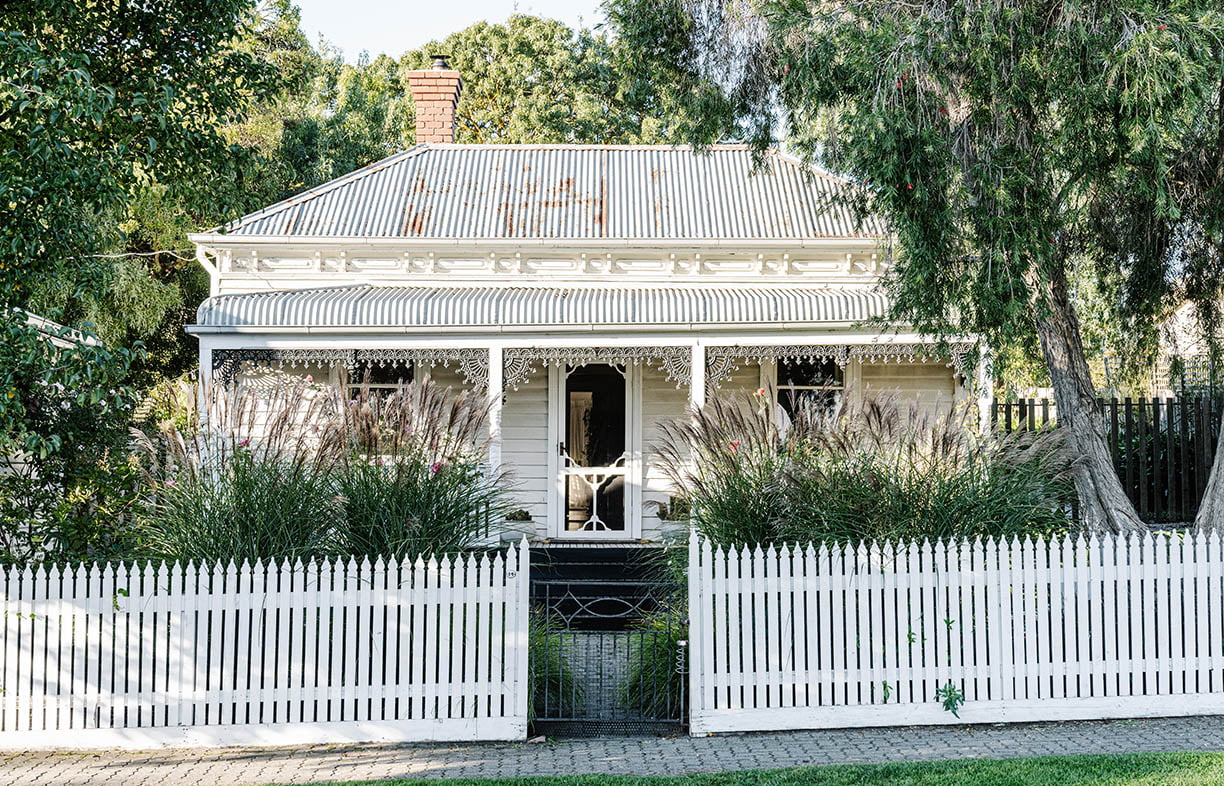
Not sure where to start on the electrification journey? Working with a one-stop shop can help streamline the conversion from a gas to an electric home, as Marnie and Ryan discovered.
Preoccupied by the slow-moving search for a bushland block for biodiversity conservation and for a future high-performing Passive House, Marnie Hawson was frozen when it came to the decision on whether and how to electrify the existing 1890s cottage she shares with husband Ryan.
An environmental scientist turned sustainable architectural photographer, Marnie was keen to switch the draughty weatherboard cottage to all-electric for energy use and abolish the gas connection. As a Certified B Corp business owner who runs initiatives such as a Business of Biodiversity program, she had been aware for several years that switching from gas to all electric appliances helps to reduce household greenhouse gas emissions. But the project seemed big, and difficult.
It wasn’t just gas that Marnie was looking to replace. The main heater in the house was a wood stove, which used lots of firewood each winter and impacted indoor air quality and health. Running this along with the instantaneous gas water heater, standard gas cooktop and the separate gas AGA stove (with oven and hotplates) they received as a wedding present over a decade ago, Marnie estimates they’ve been spending around $6,000 per year on energy and fuel, with around half that expense on firewood alone.
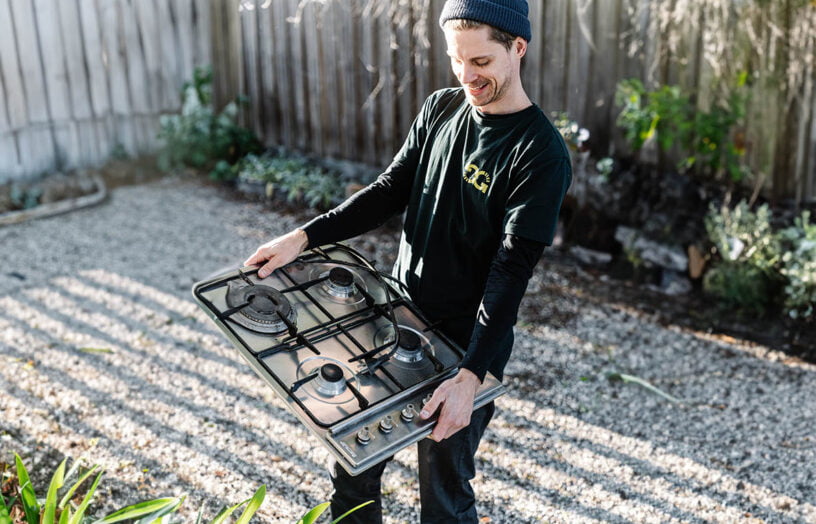
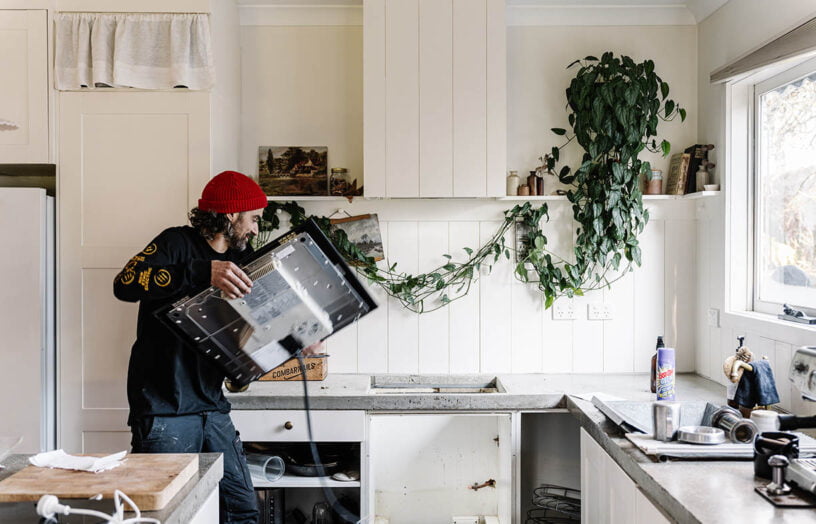
With little time to research the best appliances for their home, the couple enlisted Goodbye Gas, a ‘one-stop shop’ that manages home electrification for property owners, removing existing gas appliances and replacing them with efficient electric models. Founder and director Ben Russell says the business was created to support the clean energy transition: “It’s vital that households electrify if Australia is going to decarbonise its energy system. The five million Australian homes using gas today need to be supported to make that transition. Whether a household has one gas appliance to change over or four, the process of choosing the right products, understanding technical requirements (like new circuits or switchboard upgrades) and finding and managing trusted trades is often really challenging.”
Customers choose from a curated list of appliances that Goodbye Gas has researched, sourced from a broad range of manufacturers. Marnie says it saved her hours on the internet: “I’m the type that would do exhaustive research and spend a lot of time finding the right cooktop or heater, so having someone else do the work seemed like a really great option for us.” She also appreciated having one point of contact for the upgrades instead of managing multiple suppliers and trades herself.
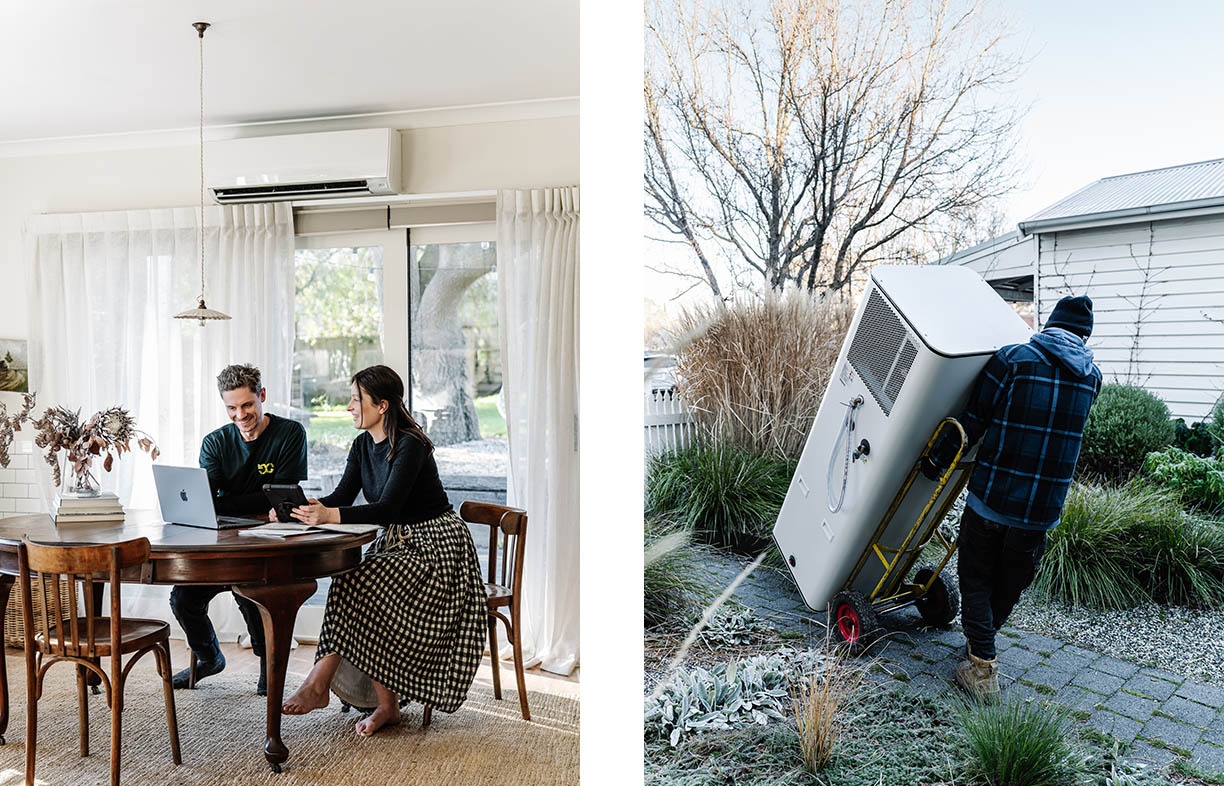
After an initial consult, the team at Goodbye Gas provided Marnie and Ryan with an electrification plan for their home, detailing the proposed upgrades and the removal of the old appliances. The appliances were replaced over two days – including a switchboard upgrade – with supply of appliances, installation and trades all managed by Goodbye Gas. The instantaneous water heater has been removed and replaced with an Emerald Energy 270-litre heat pump. The gas stove has been disconnected and its gas bottles removed, and a Smeg induction cooktop installed. A 6-kilowatt floor-mounted reverse-cycle air conditioner has been installed in the lounge to heat the house instead of the wood stove. While their beloved AGA has not been replaced, Marnie and Ryan are investigating converting it to electric, as it’s now the only appliance using the gas connection.
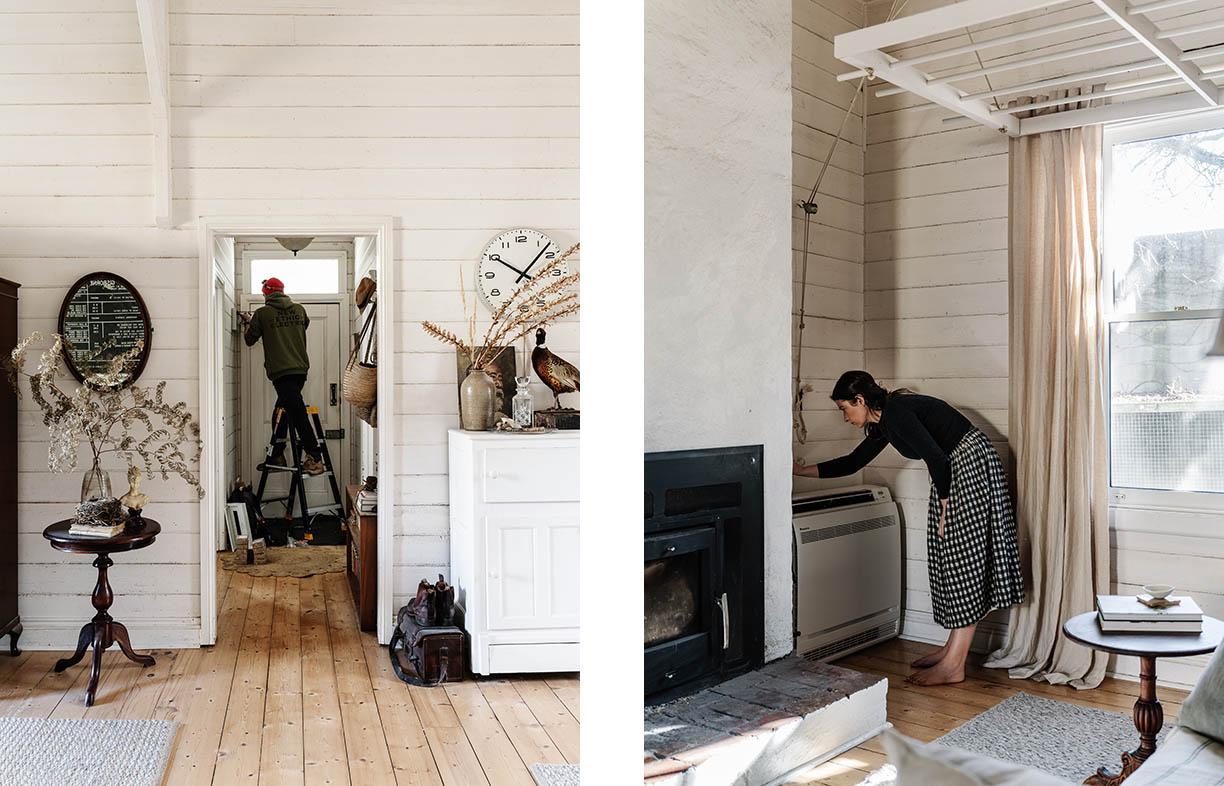
Marnie says that their main motivation for removing their gas appliances is environmental responsibility, as they have plans to build and move into a Passive House in the next few years, so the financial benefit of the upgrades will be limited if they aren’t living in their house past the payback period. “Disconnecting one more home from gas is a success,” she explains. “Other benefits will be improved air quality for us and the future owners of the house, due to no longer using gas in the kitchen or burning wood.”
She speaks highly of the one-stop shop approach to the project. “Outsourcing electrification is a great solution for people who are time-poor or want help with all the decisions. It’s been quick and simple to do.”
Further reading
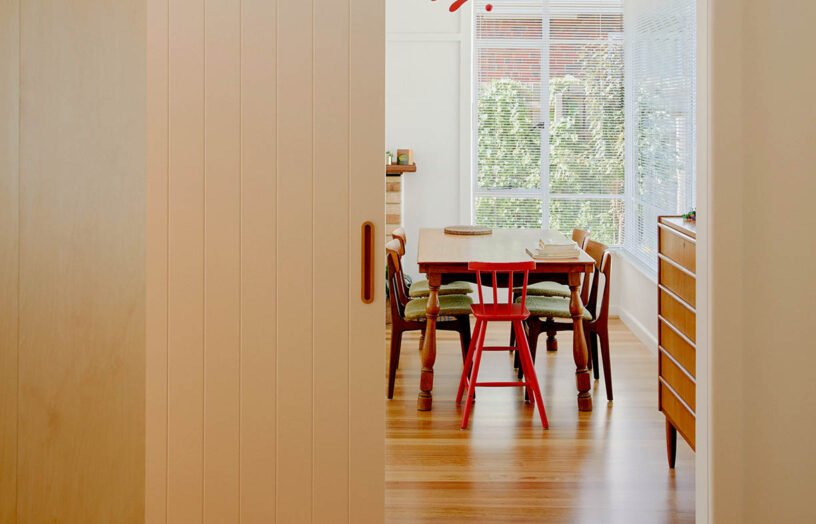 House profiles
House profiles
Like a charm
A smart renovation vastly improved functionality and sustainability in this small Melbourne home, keeping within the original footprint and retaining the cute period character.
Read more House profiles
House profiles
Airy flair
A minimalist renovation to their 1970s Queenslander unlocked natural ventilation, energy efficiency and more useable space for this Cairns family.
Read more House profiles
House profiles
Pretty in pink
This subtropical home challenges the status quo – and not just with its colour scheme.
Read more

